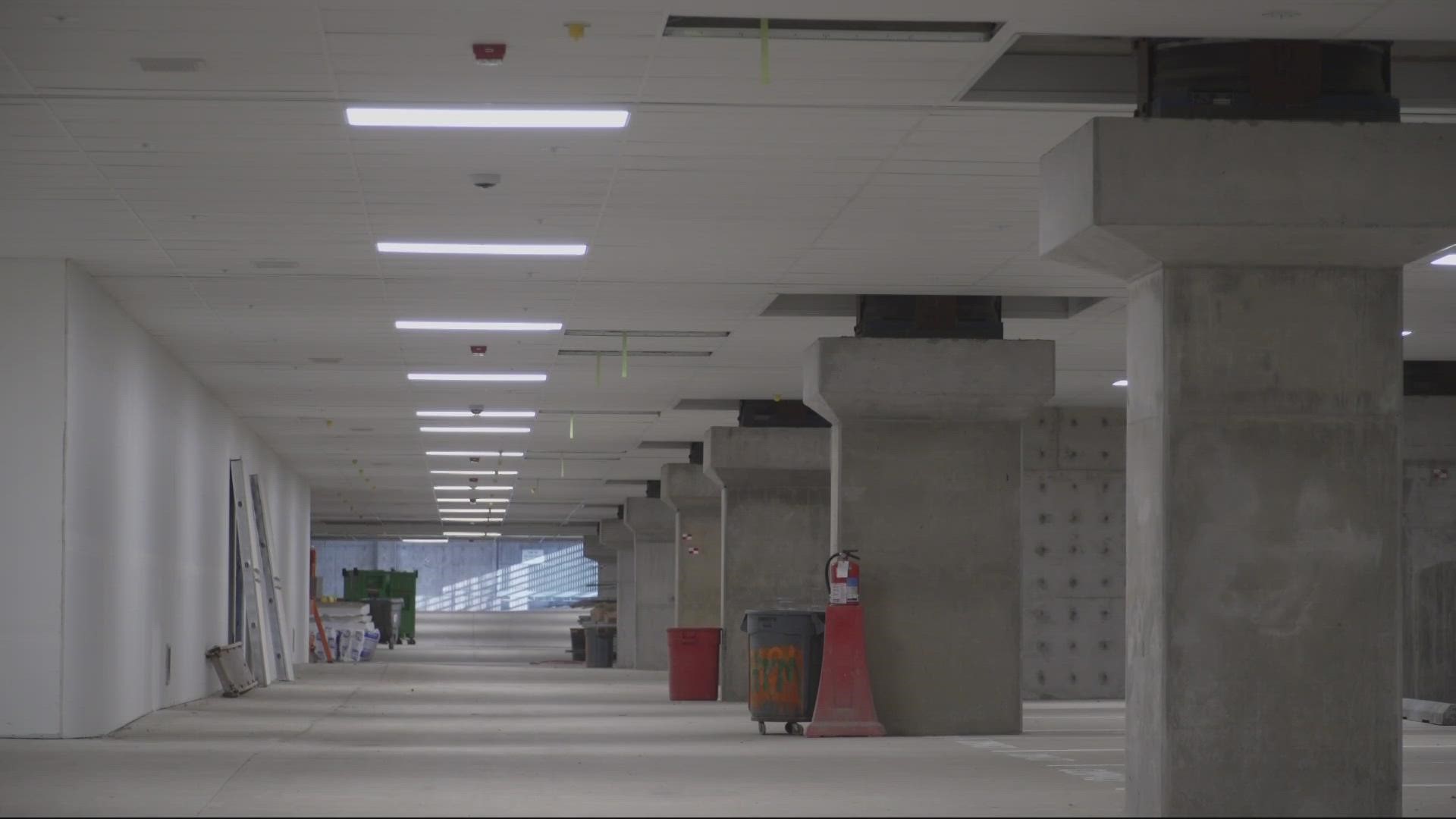SALEM, Ore. —
Oregon’s Capitol building looks a little different these days than it did before the pandemic.
Not because lawmakers are finally back to doing their business in person, but because the whole complex is undergoing a massive seismic upgrade.
Now in phase three, director of the project Jodie Jones, said this last phase is focused on seismic upgrades that will largely be invisible to visitors once all the construction is complete.
While the upgrades for the Capitol Accessibility, Maintenance and Safety project will make the building safer for the more than 200,000 people who visit each year, along with the hundreds who work there on a daily basis, Jones said it will be just as important for state government to be up and running quickly after a large earthquake.
“If we had an earthquake of that nature that did that kind of damage to this building, you need to imagine that we're also going to have a lot of damage to the entire state, and we need our legislature,” she said.
The events that led to the construction today started in March 1993.
Just after 5:30 a.m., a magnitude 5.3 quake struck east of Salem near the town of Scotts Mills. Damage was widespread, including to the Capitol. Jones said that the earthquake served as a wakeup call.
“We had a lot of damage to the rotunda,” she said. “That instigated people to start saying, ‘Well, what do we do if we have the big one?’”
A 2013 report found that the central building, which was built in 1938 and houses the rotunda, could collapse in a major quake, the kind that’s due from the Cascadia Subduction Zone. The wings, which house the House and Senate and were built more recently, were in slightly better shape, but still needed reinforcing.
Rodney Myrick, project manager for Hoffman Construction, said bringing a building that old up to modern seismic safety standards is no easy task. They’re installing roughly 150 contraptions called triple pendulum base isolators.
Myrick described the isolators as “like sliding plates with bearings in the middle,” so when an earthquake hits “they're kind of moving back and forth so the bottom would stay put and the top would be able to move.”
That means, during an earthquake, the ground could be moving up to 2 feet in any direction, but the building would stay perfectly still.
To get the isolators where they need to be, crews have installed jacks under the building to hold it in place while they excavate underneath. Then, they drill deep holes 50 to 60 feet into the ground that will form the basis for support columns.
The base isolators sit atop those columns, between the building and a 52-inch thick slab of concrete, so that the base can move, but the building cannot.
The project is expected to take until late 2025 to be completed and, until then, large parts of the Capitol will remain closed to the public.
For Myrick, who grew up visiting Salem and has recognized the Capitol since he was a kid, working on the building, which he called the “crown jewel of Oregon,” has been a privilege.
“It's the most iconic building in the state and being a lifelong Oregonian that I take a lot of pride in that, and I'm super excited to work on that project,” he said.

